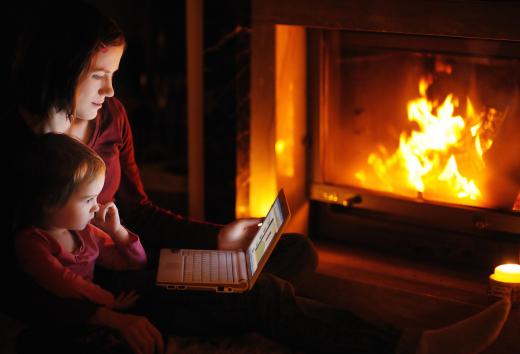A chimney code is an aspect of the building code which pertains to chimneys. Many nations follow the guidelines set out in the International Building Code and associated International Residential Code when they establish a chimney code, with some nations adding specific regulations which address regional concerns. Like other aspects of the building code, the chimney code is not proprietary, and it is freely available to members of the public. It is intended for use by contractors, architects, and other building professionals to make sure that structures comply with the safety requirements set out in the building code.
A number of concerns surround chimney construction, including the risk of fire, worries about collapse, and the need for proper ventilation. The chimney code is usually quite lengthy, going into explicit detail about the minimum requirements which must be fulfilled when a chimney is built. Specific regional concerns can include worries about seismic activity which could destabilize chimneys.

The chimney code usually dictates which materials are appropriate for building chimneys and chimney liners, sets out minimum fire safety standards for the size of the hearth, and dictates how much of the area around the chimney must be made with fireproof materials. The chimney code also dictates various clearances involved with chimney construction, and addresses issues like the size of a chimney, ease of access for maintenance, and so forth.

The chimney code for different structures and types of applications varies as well. For example, a chimney connected to a crematory furnace needs to meet different standards than a chimney attached to a household fireplace. When code regulations for different types of structures vary, as is not uncommon, the code also clearly defines the types of structures involved and the differences between them, so that contractors can be sure that they are using the most appropriate section of the building code.
When a chimney inspection is conducted as part of an inspection to determine whether or not a house has been built to code or as part of a routine maintenance inspection, the inspector relies on the chimney code to see if a chimney meets the standard. The inspector may identify problems which need to be fixed before the chimney can be used or before a structure can be cleared for use. Chimney inspections are usually required in the wake of chimney fires, extreme seismic activity, and other events which may have caused damage to the chimney. Codes are also periodically updated, which explains why a chimney may pass an inspection one year and fail in the next.
Ever since she began contributing to the site several years ago, Mary has embraced the exciting challenge of being a About Mechanics researcher and writer. Mary has a liberal arts degree from Goddard College and spends her free time reading, cooking, and exploring the great outdoors.

